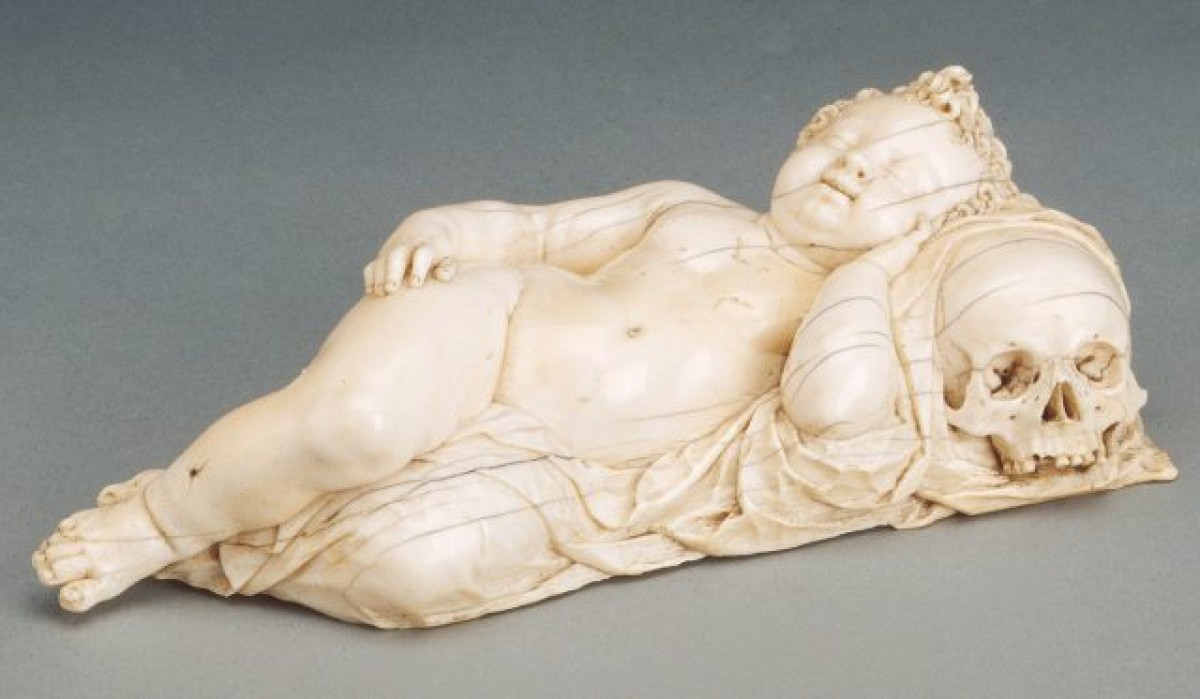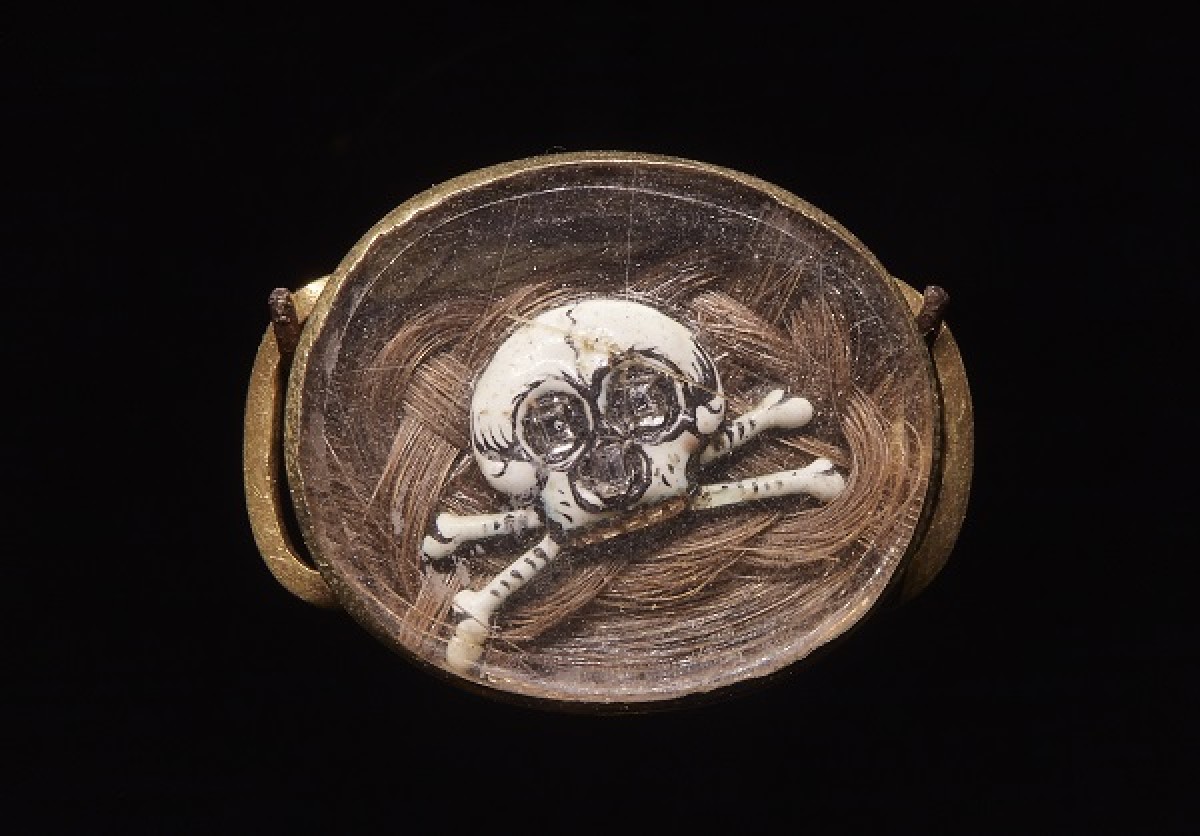ICYMI: Creepy art
In case you missed it, back in 2018 we celebrated spookiness by showcasing the fascinatingly morbid 16th century European art genre, Momento Mori.

English, Mourning Ribbon Slide: Skull and Crossbones on Plaited Hair, late 17th century. Gold, enamel, hair, gems, rock crystal. The Thomson Collection at the Art Gallery of Ontario
Can you think of a more bluntly chilling phrase than memento mori – Latin for “remember death”? When it comes to art, this spooky genre was popular throughout European history, especially in the 1600s. Associated with Christianity, memento mori art reminds religious followers of a heavenly or hellish eternity. At the time, Europe was a continent familiar with death – with wide-spread disease, war and famine and a life expectancy of under 40.
At the AGO, we have a wide-ranging collection of memento mori artworks. Below we highlight a few.
What better way to remember mortality than with a skull carving? In the early 1500s, this ivory bead would have been at the end of a rosary. Take a close look at the incredible details the artist used to create the worms and lizards crawling in and out of the skull’s cavities. Spooky!
Some memento mori artworks were a bit larger, intended for display in the home. This sculpture of a carefree youth lounging on a skull pillow reminds us of life’s bookends.
In Britain in the 1600s, some mourners wore ribbon slide pendants like these around their necks or wrists. Look closely at this one and you’ll see that beneath the skull and crossbones is a braid of hair from the deceased. A tad morbid? Perhaps, but remember, these objects come from an era without photography. Mementoes like these helped people grieve and remember their loved ones.
Here’s another accessory for the well-dressed mourner. This chickpea-sized skull pendant opens to reveal a coffin and an exquisitely detailed skeleton, less than one centimetre long.
This ivory plaque shows a popular theme called The Dance of Death (also referred to as the Danse Macabre). The Dance of Death was an artistic genre that emphasized mortality as a great unifier. The theme appears in murals, poetry, woodcut prints and music.
Are you an AGOinsider yet? If not, sign up to have stories like these delivered straight to your inbox every week.





